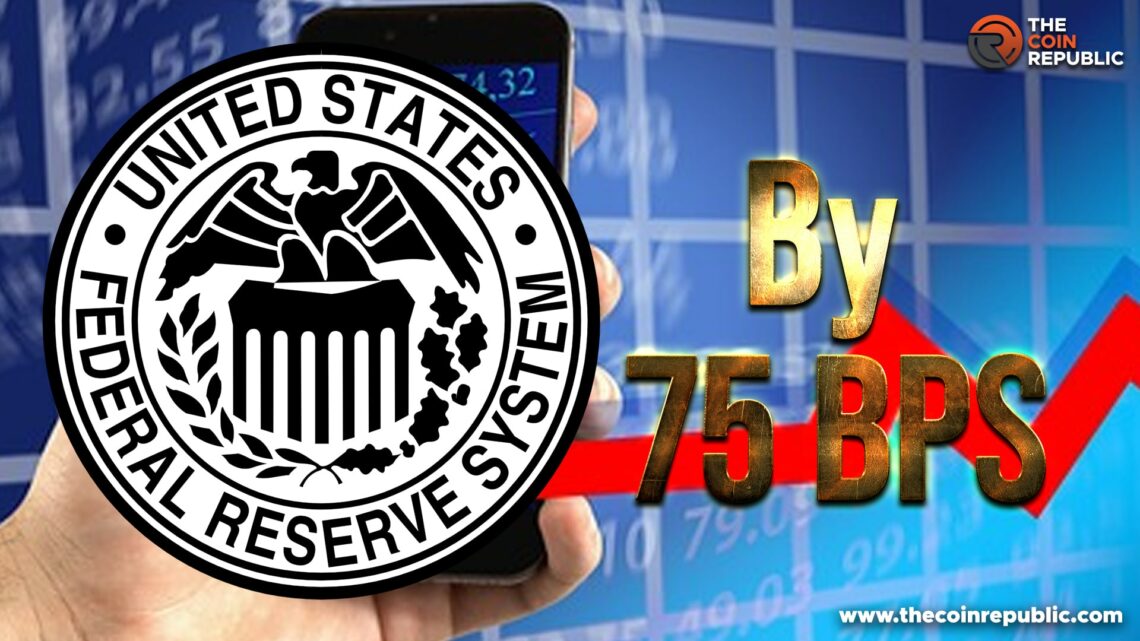- The Fed announces 4th consecutive 75-bps hike in fed rate.
- BTC and Ether fall marginally.
- Fed may go easier with fed rates in the future.
Markets were prepared for the rate-hike
The Federal Reserve (Fed) raised the Federal Funds Rate (also called Bank rate or fed rate) by 75 basis points for the 4th time this year. Bitcoin fell marginally while Ethereum showed a relatively steeper fall. Rate hikes may be shorter from here on.
However, market reaction was essentially tepid because the rate-hike was expected. Fed Chair Jerome Powell had made it clear during the last rate-hike announcement that the central bank would not shy away from using its tools to control the inflation rate.
As per CoinMarketCap data, digital gold – Bitcoin – price fell by as low as 2.21% before encountering bulls and Ether of the Ethereum Merge fame and the second largest crypto by market cap fell by 4% before encountering buying pressure.
S&P 500 rallied briefly around the time of the announcement before sliding to $3759 when the market closed. The US Dollar index fell incrementally; price at press time was hovering around the $112 mark.
Elon Musk’s favorite and OG memecoin Dogecoin plummeted 10% post announcement – the sharpest among altcoins. XRP and Cardano prices fell between 3-4% before correction today.
Chair Powell is pummeling the increase-fed-rate-button
Inflation rates have reached record levels. According to the latest Bureau of Labor Statistics (BLS) report on Consumer Price Index (CPI), the year-on-year inflation rate stood at 8.1%, which was marginally lower than the year ending August.
Prices of everyday items like eggs and butter have soared over 30% since last year. The Fed needs to tame inflation before prices rise any further because the consequences of inflation rates going higher could be catastrophic. Even if food and energy which are the most volatile in the consumer basket are excluded the inflation rate is still on the rise.
Hiking the interest rate makes borrowing more expensive; liquidity will fall; investments will decline. Essentially, by slowing the pace at which the economy grows which implies a reduction in consumer demand the inflation rate falls.
Inflation rates surge either because of cost pressures or demand pressures. These are the simplest explanations for rising inflation rates; however, these are not the only reasons inflation may rise. The world is presently going through a cost-push inflationary phase. Since oil prices are high and supply chain shocks from the pandemic have created the cost-push inflation since it costs more to produce the same amount of goods and services.
Cost-push inflation is counter-cyclical which means that unemployment and economic output will fall at the same time. However, vacant jobs are increasing in the US (10.7 million jobs were posted in September. A resilient job market signals economic growth and that is exactly what the Fed does not want at the moment. The Fed wants the economy to slow down just enough so that prices fall and it can begin increasing money supply.
The effects of rate hikes will be visible in 2023 which means that market reactions may be incorporating a prediction of next year’s economic outlook. Essentially, even the investors going long will be wary of the Fed’s next rate hike and the political changes in the US.

Nancy J. Allen is a crypto enthusiast, with a major in macroeconomics and minor in business statistics. She believes that cryptocurrencies inspire people to be their own banks, and step aside from traditional monetary exchange systems. She is also intrigued by blockchain technology and its functioning. She frequently researches, and posts content on the top altcoins, their theoretical working principles and technical price predictions.


 Home
Home News
News










